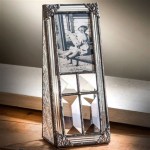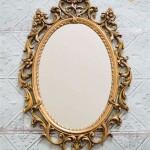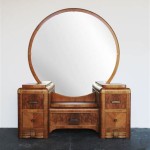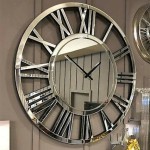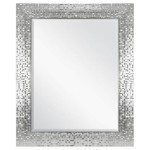Why Convex Mirrors Produce Only Virtual Images
Convex mirrors, characterized by their outwardly curved reflecting surface, possess a unique optical property: they produce only virtual images. Understanding this phenomenon requires a closer look at the nature of light reflection and image formation.
The fundamental principle governing image formation in any mirror is the law of reflection. This law states that the angle of incidence, the angle formed between the incident light ray and the normal to the mirror surface, is equal to the angle of reflection, the angle formed between the reflected ray and the normal. This principle applies to every point on the mirror's surface, regardless of its curvature.
In the case of a convex mirror, the curvature plays a crucial role in determining the path of reflected rays. Because the surface bulges outwards, the normal at each point of reflection differs. Consequently, parallel incident rays striking different points on the mirror are reflected in diverging directions. This divergence of reflected rays is the key reason why convex mirrors cannot form real images.
A real image is formed when reflected or refracted light rays converge at a point. This convergence allows the image to be projected onto a screen. In contrast, a virtual image is formed when reflected or refracted rays appear to diverge from a point behind the mirror. The rays themselves do not actually converge at this point; it is the backward extension of these diverging rays that intersect, creating the illusion of an image located behind the mirror. Since a convex mirror always causes reflected rays to diverge, the resulting image is always virtual.
To further illustrate this concept, consider a parallel beam of light incident on a convex mirror. Upon reflection, the rays diverge, and their backward extensions converge behind the mirror, forming a virtual image. This image is always smaller than the object, upright, and located between the focal point and the mirror. The focal point of a convex mirror is the point where parallel rays appear to diverge from after reflection. It is a virtual point located behind the mirror.
The size and location of the virtual image formed by a convex mirror are dependent on the object's distance from the mirror. As the object moves closer to the mirror, the virtual image also moves closer to the mirror and increases in size. However, the image always remains smaller than the object and located behind the mirror.
The unique image-forming properties of convex mirrors make them highly useful in various applications. One common application is in rearview mirrors of vehicles. The diverging nature of reflected rays allows a wider field of view than a plane mirror, enabling drivers to see a larger portion of the area behind them. The smaller virtual image represents a broader scene, enhancing the driver's awareness of their surroundings.
Another application is in security mirrors used in shops and public spaces. The wide field of view provided by convex mirrors allows for monitoring a larger area with a single mirror. The reduced image size, while making objects appear smaller, allows observers to capture a more comprehensive view of the monitored space, facilitating surveillance and enhancing security.
Convex mirrors are also employed in certain optical instruments, such as some telescopes, and in streetlight reflectors. In telescopes, convex mirrors can be used in combination with other optical elements to expand the field of view. In streetlights, the diverging reflection property helps distribute light over a wider area, improving visibility.
The inherent divergence of reflected rays caused by the outward curvature of convex mirrors dictates that these mirrors can only produce virtual images. This characteristic is crucial for their practical applications, providing wide fields of view and making them valuable tools in various scenarios, from enhancing road safety to bolstering security measures.
The distinct properties of convex mirrors, governed by the laws of reflection and the mirror's curvature, determine the nature of the images they produce. The consistent divergence of reflected rays, a direct consequence of the outward-curving surface, leads exclusively to the formation of virtual images, smaller and seemingly located behind the mirror, contributing to their wide range of applications.
Can A Convex Mirror Produce Real Image When The Object Is Virtual And Vice Versa Concave If Yes How Will It Be Possible Why Quora
Can A Convex Mirror Form Magnified Image Quora

Question Recalling Whether The Image Produced By A Convex Mirror Can Be Inverted Nagwa

Convex Mirrors
Is It Possible For A Convex Mirror To Produce Real Image When The Object Virtual Quora

Solved Ysis Can A Convex Mirror Produce Real Images If Yes Describe How No Why Not Does Because It Only Produces Virtual For This

05 Convex Mirrors

Convex Mirror Image Formation Conditions Ray Diagram Uses
Is It Possible For A Convex Mirror To Produce Real Image When The Object Virtual Quora

Real Image Wikipedia

